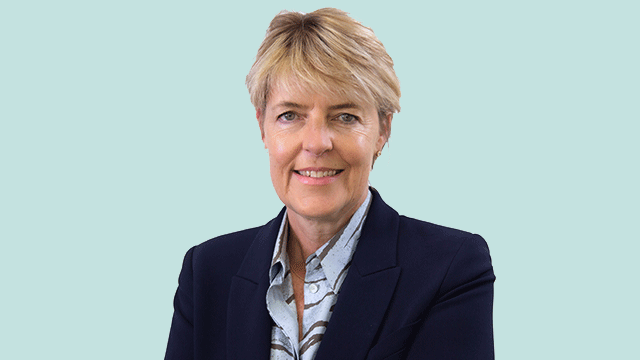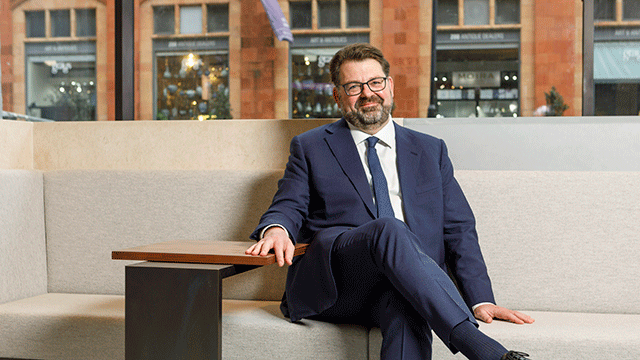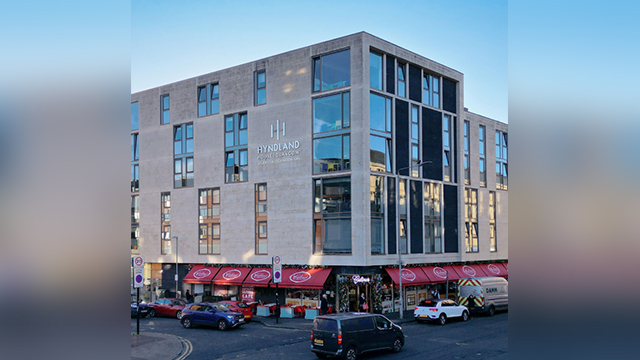The Church has just written off a £40m investment in two New York housing estates and its property portfolio is 16% down, but chief surveyor Joseph Cannon is confident it is minimising risk. By Lucy Barnard
A disastrous £40m investment in two Manhattan housing complexes has drawn the close attention of the business media to the Church of England’s property dealings.
For Joseph Cannon, a surveyor with a divinity degree and the job of looking after the £1.4bn of property investments that fund the clergy’s pensions, the experience has been “painful”, but the furore undeserved.
The Church wrote off the entire £40m investment in Stuyvesant Town and Peter Cooper Village last month, after Tishman Speyer, the New York property firm it had backed, handed the 11,000-home estates over to its creditors.
Tishman and fund management group BlackRock had led a $5.4bn (£2.86bn then) buyout of the estates at the height of the investment boom in 2006. But plummeting values and the failure of a strategy to put up the rents left Tishman struggling to keep up repayments on debt attached to the deal.
The high-profile default has led to questions being raised about just what the Church was doing investing in tower blocks in Manhattan in the first place, and also whether it should have associated itself with a policy of remov-ing one of the last bastions of affordable housing among the multi-million-dollar homes of lower Manhattan.
“The loss of our investment in Stuyvesant Town is very unpleasant and clearly not something we would ever have wished for. But painful as it has been, we have been able to absorb it and it has not knocked us off strategic course in any way,” says Cannon, the chief surveyor of the Church Commissioners.
Sitting in one of the meeting rooms of Church House, next to Westminster Abbey, just a few feet above the debating chamber where General Synod is taking place, he argues that the rationale for the investment stands up to scrutiny.
“We felt that it was not entirely dissimilar to our Hyde Park estate in central London. Our experience here in London suggests that large established residential estates in world cities will have very good prospects over the longer term.” But he acknowledges: “Unfortunately, in New York, we were not able to stay in for the long term.”
The high-profile, highly geared investment was the biggest single-asset deal in property history when it was struck by Tishman and giant investment manager BlackRock four years ago. As manager, Tishman pursued a strategy of pushing up rents on the 56 apartment blocks, which were originally built to provide affordable accommodation for US servicemen and women on their return from the second world war.
This strategy was scuppered last year when a court ruling found that Tishman had wrongfully raised rents on more than 3,000 of the rent-regulated apartments. With values also plummeting, Tishman struggled to meet mortgage payments on the property.
Nevertheless, Cannon says there was no clash with the Church’s ethical investment policy.
“Part of the manager’s strategy, along with many other New York landlords, was simply over time to upgrade the property,” he says. “We saw it very differently from what we would classify as ‘affordable housing’ here in the UK. That is because it is very much a middle-class community. And, as I understand it, the income trigger for an apartment to move to a market rent is that the tenant needs to be earning in excess of $175,000 pa for two years running. So I certainly see it as the gradual upgrading over time of what is very much a middle-class community. We looked at it carefully before we made the investment.”
Cannon points out that the Church employs an Ethical Investment Advisory Group, which helps shape its investment decisions. Last week, on its advice, the Church sold its £3.3m worth of shares in international mining company Vedanta because of concerns over the corporation’s human rights record. However, he says that at the same time, the Church has a fiduciary duty to its pensioners to obtain the best possible returns.
The news of the Manhattan loss has sparked memories of the last time the Church lost a property bet: £800m was wiped off the Commissioners’ investments in the 1980s when it had its fingers burnt in risky property speculation both in the UK and North America. But Cannon is quick to point out that the losses in Manhattan are in no way similar to the mess the Church got itself into in the last recession.
“The same thing hasn’t happened this time around,” Cannon insists. “Much earlier in my career, one of the things I was involved in was assisting with the sell-off of the US direct portfolio that the Church bought in the 1980s. That was a large speculative development programme, mainly financed with borrowed funds on floating rates.
“Since then, we’ve seen a decade of rebalancing of the portfolios. We’ve made sure we do not have too much money committed to any individual position and that we have a spread of investments.”
According to Cannon, the main difference for the Church between this recession and the last one is that it no longer has any debt on its books and it now has an exposure to commercial property of around 30%, as opposed to 50%. Last time, he says, it went into a property recession with a huge exposure in terms of voids.
“We have gone into this recession and come through it to date in much better shape because of our spread of investments. The voids on our commercial portfolio are approximately 2% today, which compares favourably across the industry. That is partly a reflection of the fact that we hold assets such as farms and the fact that our central London residential portfolio has very low vacancy rates – and they are a much greater part of the portfolio than was the case in the early 1990s.”
Cannon highlights that returns from the Church’s holdings have also been resilient. Although in 2008 the Church’s portfolios showed a total return of -16%, this compared favourably with IPD returns of -22% over the same period. The numbers for 2009 are still being totted up but Cannon expects the portfolios to have produced a positive return that will either match IPD or possibly exceed it. Part of the reason for that, he says, is that the Church’s farmland has produced strongly positive returns. According to the Commissioners’ annual report, the Church’s farmland holdings saw their values rise by 20-21% in 2008.
It all shows, says Cannon, that spreading investments to reduce risk pays off.
“We are reviewing the commercial holdings we have,” says Cannon. “We think it’s not a bad time to be buying. We look to undertake selective sales each year. We’re looking at selling some of the commercial portfolio very selectively and some farmland.”
But, he adds, the Church is unlikely to do anything rash and intends to stick to its cautious investment criteria. “We’re never a forced seller or a forced buyer,” he says. “We have such a diversified asset base that we can be careful about what we want to dispose of or add. That doesn’t mean we hold on to assets religiously,” he adds quickly, “no pun intended. We can be flexible but we try to take a longer-term view.”
The Church’s portfolio on a plate
Prior to the Reformation, the Church was the largest landowner in the country. Following the dissolution of the monasteries in 1536, the Church spent 168 years as a dependant of the Crown until control of its finances was handed back by Queen Anne in 1704. These days the investment fund is mostly used to pay the pensions of retired clergy.
The Church’s key holdings include:










